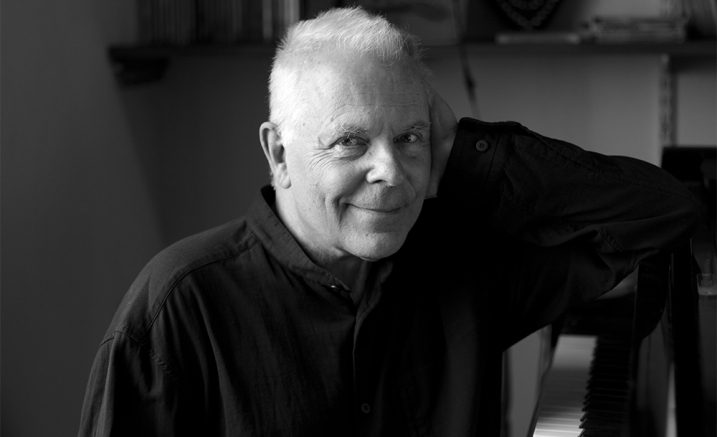Snapshots and sound recordings – it’s hard to imagine life without them. They reinforce the natural human tendency to remember people (and musical artists) either as we first encounter them or at specific milestones along life’s way. No doubt inspired by his many fine recordings, music lovers took this rare opportunity to encounter the legendary Stephen Kovacevich in the flesh. A near-capacity audience at Elisabeth Murdoch Hall attested to the esteem in which he is held.
 Stephen Kovacevich
Stephen Kovacevich
Kovacevich is now 78, and although having suffered and recovered from a stroke in his late 60s, he continues to tour. While his recordings are renowned for their emotional intensity and insight, at this stage in his career Kovacevich seems content to claim the prerogative of a more idiosyncratic approach to his performances.
Not so much idiosyncratic as old-fashioned, Kovacevich opened with Bach’s Partita No. 4 in D major (BWV 828), investing the Overture with an appropriate swagger within the context of a flexible tactus. The fluidity of the Allemande and Courante contrasted with the well-spaced introspection of the Aria. It is particularly here in such quiet moments of rumination that Kovacevich shines. There was plenty of energy in the ensuing Sarabande, Menuet and Gigue which were delivered in a no-nonsense manner. Kovacevich is not afraid to use the piano in a fairly orchestral manner in Bach and does not seem overly concerned with historical niceties.
The remaining two works on the program are ones of which Kovacevich has made justly famous recordings. Although Beethoven’s Piano Sonata in A-flat, Op. 110 is a predominantly lyrical affair, the changes of texture through its unique three-movement structure present interesting challenges for the interpreter. Kovacevich’s focus was almost entirely on inner exploration rather than the projection of a dramatic narrative. Despite some arresting moments both at the opening and in the fugue, much of the fine detail of Beethoven’s writing was occluded by lead-footed pedalling and at times there seemed to be a tendency to rush through passage work almost apologetically, with the sad end result that for the most part I felt left outside the performance rather than invited into it.
Schubert’s great Piano Sonata in B-flat, D. 960 fared better, particularly in the inner movements. Kovacevich’s timbre and timing in the Andante worked their magic, evoking the timeless quality for which this movement is justly famous. The Scherzo had fine clarity and buoyancy together with understated humour. Despite a spacious and elegantly shaped main melody, the opening Molto moderato also suffered from blurred pedalling and a reluctance to allow the various thematic ideas enough space. The finale teased with moments of brilliance yet needed a final burst of ebullience.
Unlike snapshots and recordings, people do change. Regardless of how much you warm to the current playing of Kovacevich, this current tour is a wonderful opportunity to salute and thank a pianist who has given the world so many happy and satisfying musical memories.











Comments
Log in to join the conversation.